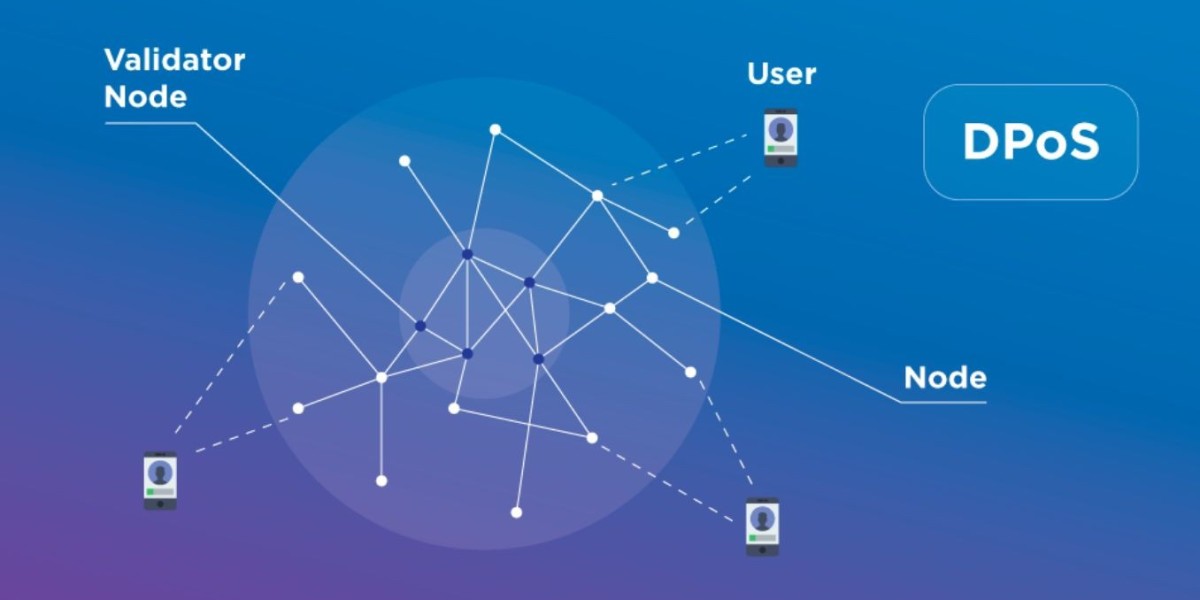Blockchain technology relies on consensus mechanisms to validate transactions and secure the network. Among the many mechanisms developed, Delegated Proof of Stake (DPoS) has emerged as a popular choice for achieving efficiency, scalability, and democratic governance in blockchain systems. This article explores how DPoS works, its benefits, and its drawbacks, while providing actionable insights for those interested in DPoS-based projects.
What is DPoS?
Delegated Proof of Stake (DPoS) is a blockchain consensus mechanism developed by Daniel Larimer in 2013. It builds on the principles of Proof of Stake (PoS) but introduces a more democratic approach by allowing token holders to elect a limited number of delegates, also known as witnesses or block producers, to validate transactions and create new blocks.
The key innovation of DPoS lies in its ability to balance decentralization with efficiency. By limiting the number of active validators, DPoS significantly increases the network's transaction throughput while maintaining a level of decentralization through community voting.
How Does DPoS Work?
1. The Voting Process
In a DPoS network, token holders participate in voting to elect delegates. Each token holder's voting power is proportional to the number of tokens they hold. For example, if Alice owns 100 tokens, her vote carries more weight than Bob's vote, who owns 50 tokens.
2. Delegate Selection
The top-ranked delegates, based on the number of votes received, are chosen as active block producers. The number of active delegates varies by blockchain (e.g., 21 in EOS, 27 in Smart Blockchain). These delegates are responsible for validating transactions, producing blocks, and maintaining the network.
3. Block Production
Delegates take turns producing blocks in a pre-determined sequence. This rotation ensures predictability and fairness, as each delegate gets an equal opportunity to contribute.
4. Rewards and Incentives
Delegates earn rewards for their services, which they can share with voters as an incentive. This creates a mutually beneficial relationship between delegates and the community, encouraging active participation.
How DPoS Differs from Other Consensus Mechanisms
DPoS vs. Proof of Work (PoW)
Efficiency: DPoS networks process transactions faster than PoW systems like Bitcoin, which rely on energy-intensive mining.
Energy Consumption: PoW demands significant computational power, whereas DPoS is more energy-efficient.
Decentralization: PoW systems are often criticized for mining centralization, while DPoS aims to enhance decentralization through voting.
DPoS vs. Proof of Stake (PoS)
Governance: Unlike traditional PoS, where validators are chosen based on the number of tokens staked, DPoS introduces a layer of governance by allowing the community to elect delegates.
Scalability: DPoS is better suited for handling high transaction volumes due to its limited number of block producers.
Advantages of DPoS
1. High Efficiency and Scalability
DPoS networks are designed to handle a large number of transactions per second (TPS). For instance, Smart Blockchain can process up to 2,000 TPS, making it suitable for applications requiring high throughput.
2. Democratic Governance
DPoS empowers token holders to influence the network by voting for delegates. This promotes a more decentralized and community-driven ecosystem compared to other mechanisms.
3. Lower Energy Consumption
Unlike PoW, which involves energy-intensive mining, DPoS requires minimal computational resources, making it a greener alternative.
4. Predictable Block Production
The sequential rotation of delegates ensures that block production is consistent and predictable, reducing delays and increasing network stability.
Criticisms and Drawbacks of DPoS
1. Centralization Risks
While DPoS aims for decentralization, the limited number of delegates can lead to power concentration. For example, if the same group of delegates consistently receives the majority of votes, it may undermine the system’s democratic nature.
2. Voter Apathy
Active participation from token holders is crucial for the success of a DPoS system. However, voter apathy or lack of engagement can lead to stagnation and reduced accountability.
3. Favoritism
Delegates with significant resources or popularity may dominate the election process, marginalizing smaller participants and reducing inclusivity.
4. Security Concerns
Although DPoS enhances efficiency, it may trade off some decentralization, potentially making the network more susceptible to coordinated attacks.
Real-World Applications of DPoS: The Case of Smart Blockchain
One of the prominent implementations of DPoS is Smart Blockchain, which leverages this consensus mechanism to achieve high efficiency and community governance.
Key Features of Smart Blockchain:
High Throughput: Processes up to 2,000 transactions per second.
Low Fees: Transaction costs are typically less than $0.000005.
Efficient Block Production: Generates blocks every 3 seconds.
DPoS in Action:
Smart Blockchain uses a system of 27 Super Representatives (SRs) elected by token holders. Elections occur every 6 hours, ensuring dynamic and transparent governance. Token holders who freeze their SMART tokens can vote for SR candidates, and their voting power is proportional to the amount frozen.
Additionally, Smart Blockchain's native token, SMART, plays a critical role in this ecosystem. It facilitates transactions, powers governance mechanisms, and serves as an incentive for voters and delegates alike. The token is also actively traded on various platforms, such as the SMART USDT pair, making it accessible for those who want to support or participate in the network's growth.
This model showcases the scalability and democratic potential of DPoS while addressing the energy concerns associated with traditional systems.
Actionable Insights for Readers
1. Participate in DPoS Networks
If you're a token holder in a DPoS blockchain, consider participating in delegate elections to influence the network's governance. Voting is not only a right but also a way to contribute to the ecosystem's growth.
2. Research DPoS-Based Projects
Explore blockchains like EOS, TRON, and Smart Blockchain to understand how they leverage DPoS for scalability and efficiency. Each network has unique features and applications that cater to different use cases.
3. Evaluate the Trade-Offs
While DPoS offers significant advantages, it's essential to consider the potential drawbacks, such as centralization risks and voter apathy. Stay informed and critically evaluate the projects you invest in.
Conclusion
Delegated Proof of Stake (DPoS) represents a significant evolution in blockchain consensus mechanisms, combining efficiency, scalability, and democratic governance. Its ability to process transactions quickly and involve the community in decision-making makes it a compelling choice for modern blockchain networks. However, like any system, DPoS is not without its challenges, including centralization risks and the need for active participation.
As blockchain technology continues to evolve, DPoS-based projects like Smart Blockchain demonstrate the potential of this innovative consensus mechanism. Whether you're a tech enthusiast, an investor, or a blockchain beginner, understanding DPoS is crucial for navigating the world of decentralized technologies.










